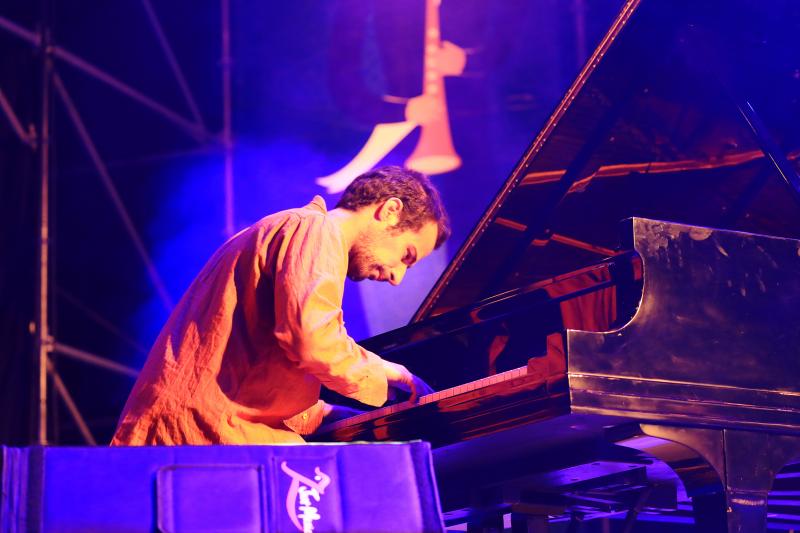The Taichung Jazz Festival is the latest casualty of COVID-19.
City officials announced the cancelation of this year’s festival, which typically attracts upwards of 1 million spectators over a 10-day period each October.
“It’s impossible this year,” said Hsiao Jing-ping (蕭靜萍), head of performing arts for the city’s Cultural Affairs Bureau. “We just didn’t have a choice.”

Photo courtesy of Taichung City Government
Difficulty getting overseas jazz musicians into the country coupled with concerns over large crowd size, forced organizers to cancel the festival, Hsiao said. The decision was made earlier this summer, she added.
The festival, which would have celebrated its 18th year, has grown into one of Asia’s largest. Last year’s event brought together more than 50 jazz groups performing throughout Taichung.
Hordes of spectators typically pack Civic Square (市民廣場主舞臺) to see local and international jazz groups, including Grammy and Golden Melody Award winning artists.
With the festival’s cancelation, organizers said they hoped others would help give local jazz musicians a venue to perform.
In order to further help promote jazz in the city, the city’s Cultural Affairs Bureau is cooperating with Compass Magazine, which hosts an annual weekend music festival.
This year’s Compass festival is set to take place in mid October. While jazz fans might be disappointed, Hsiao said she was optimistic that the Taichung Jazz Festival would return for 2021.

In the March 9 edition of the Taipei Times a piece by Ninon Godefroy ran with the headine “The quiet, gentle rhythm of Taiwan.” It started with the line “Taiwan is a small, humble place. There is no Eiffel Tower, no pyramids — no singular attraction that draws the world’s attention.” I laughed out loud at that. This was out of no disrespect for the author or the piece, which made some interesting analogies and good points about how both Din Tai Fung’s and Taiwan Semiconductor Manufacturing Co’s (TSMC, 台積電) meticulous attention to detail and quality are not quite up to

April 21 to April 27 Hsieh Er’s (謝娥) political fortunes were rising fast after she got out of jail and joined the Chinese Nationalist Party (KMT) in December 1945. Not only did she hold key positions in various committees, she was elected the only woman on the Taipei City Council and headed to Nanjing in 1946 as the sole Taiwanese female representative to the National Constituent Assembly. With the support of first lady Soong May-ling (宋美齡), she started the Taipei Women’s Association and Taiwan Provincial Women’s Association, where she

Chinese Nationalist Party (KMT) Chairman Eric Chu (朱立倫) hatched a bold plan to charge forward and seize the initiative when he held a protest in front of the Taipei City Prosecutors’ Office. Though risky, because illegal, its success would help tackle at least six problems facing both himself and the KMT. What he did not see coming was Taipei Mayor Chiang Wan-an (將萬安) tripping him up out of the gate. In spite of Chu being the most consequential and successful KMT chairman since the early 2010s — arguably saving the party from financial ruin and restoring its electoral viability —

It is one of the more remarkable facts of Taiwan history that it was never occupied or claimed by any of the numerous kingdoms of southern China — Han or otherwise — that lay just across the water from it. None of their brilliant ministers ever discovered that Taiwan was a “core interest” of the state whose annexation was “inevitable.” As Paul Kua notes in an excellent monograph laying out how the Portuguese gave Taiwan the name “Formosa,” the first Europeans to express an interest in occupying Taiwan were the Spanish. Tonio Andrade in his seminal work, How Taiwan Became Chinese,